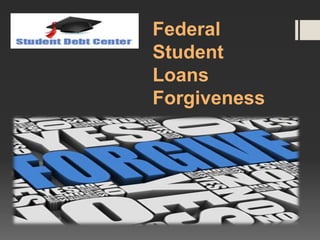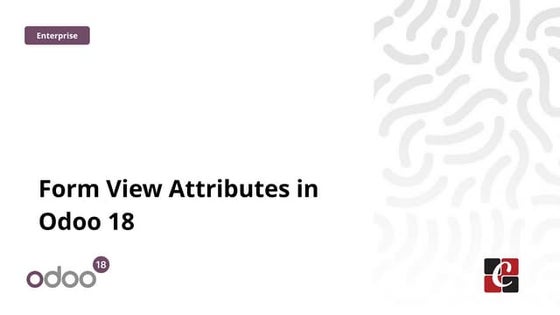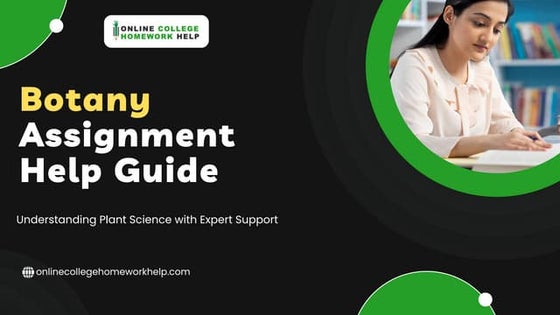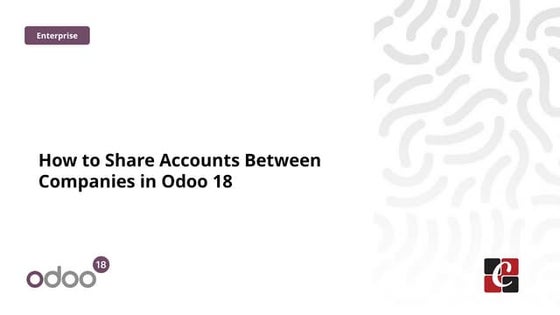Student loan forgiveness
Download as pptx, pdf1 like382 views
Obama Student Loan Forgiveness is a Federal program designed to help people with Student Loan Debt. GET your Student Loans Forgiven Now!
1 of 8
Download to read offline








Recommended
Can i consolidate a defaulted loan

Can i consolidate a defaulted loanBruce Mesnekoff
╠²
Generally, Federal education loan(s) in default may be consolidated in a Direct Consolidation Loan if borrowers:
Make satisfactory repayment arrangements on the defaulted loans with the current loan holder(s) before consolidating.
OR Agree to repay the new Direct Consolidation Loan under either the Income Contingent or Income-Based Repayment Plan.
If, before applying for consolidation, borrowers who want to completely clear the default notation from their credit records, they may want to consider another option: loan rehabilitation. Borrowers should contact their loan holders to obtain more information about this option.Federal student loans



Federal student loansStudent Loan
╠²
How to Get Student Loan. Discover Student Loans offers private student loans for international students who are attending an eligible US college or university. International students require a creditworthy cosigner who is a US citizen or Permanent Resident, Visit:-http://www.howstudentloan.com/Money For College



Money For Collegerussojam
╠²
This document summarizes various financial aid opportunities for students in 2009-2010, including grants, scholarships, loans, and work study programs. It outlines the major federal and state grant programs available, such as Pell Grants and Maine State Grants. It also discusses scholarships, loans like Perkins and Stafford loans, and the Federal Work Study Program. Students are encouraged to contact their university financial aid office to learn more about the options available to help fund their education.Federal student loan repayment



Federal student loan repaymentStudent Loan
╠²
Get Student Loan, How To Get Student Loans At Low Interest, How To Get Student Loans From Banks, How To Get Student Loans In Canada, How To Get Private Student Loans, How To Get Student Loans For Graduate School, How To Get Student Loans In Usa.Visit:-http://www.howstudentloan.com/Funding You Future



Funding You Futurevonmomo
╠²
The document discusses various types of federal financial aid available for students, including:
1) The Free Application for Federal Student Aid (FAFSA) which is used to apply for grants, work-study, and loans.
2) The Pell Grant which does not need to be repaid and can be awarded to students in post-baccalaureate teacher programs.
3) Federal loans including Perkins Loans, Direct Subsidized and Unsubsidized Stafford Loans, and Direct PLUS Loans. These have varying interest rates and eligibility requirements.
4) Options for loan forgiveness such as programs for teachers working in low-income schools, and different repayment plans like income-based repaymentFederal student aid / FAFSA



Federal student aid / FAFSApreptalk
╠²
This document provides an overview of federal student aid available to students in the United States. It discusses the different types of federal student aid including grants, loans, and work-study. It outlines eligibility requirements and explains the FAFSA application process. It also describes various federal student loan programs like Direct Loans, Perkins Loans, and PLUS Loans. The document provides details on interest rates, loan limits, grace periods and repayment terms for each loan type.How To Apply For College Funding 



How To Apply For College Funding joanne01
╠²
The document provides information about applying for college funding through the Free Application for Federal Student Aid (FAFSA). It discusses completing and submitting the FAFSA to be considered for federal grants, loans, work-study, and scholarships. Specific federal and private loan programs are outlined, including eligibility requirements and loan limits. The maximum award amounts for federal and state grants are also listed.Federal student loan repayment



Federal student loan repaymentStudent Loan
╠²
How To Get Student Loans At Low Interest, How To Get Student Loans From Banks, How To Get Student Loans In Canada, How To Get Private Student Loans, How To Get Student Loans For Graduate School, How To Get Student Loans In Usa, Federal Student Loan Debt Relief, How To Get Federal Student Loan"How Do I Pay for College?"



"How Do I Pay for College?"Boise Bible College
╠²
This document outlines several common ways for students to pay for college, including institutional and outside scholarships, savings, part-time employment, payment plans, and various types of federal aid such as Pell Grants, SEOG Grants, and student loans. It also describes Boise Bible College's student loan repayment assistance program called the BBC Pledge, which provides reimbursement for graduates making under $20,000 annually and proportional assistance up to $38,000.Student Loan Counseling 



Student Loan Counseling LendKey
╠²
A complete guide of private student loan counseling for the college graduate!
Get the necessary information to pay off your student loans and move forward into the professional world. Financial Aid



Financial AidPeter Van Leeuwen
╠²
This document outlines various federal, state, and institutional financial aid programs available to students at Hodges University to help meet educational expenses. It describes the Federal Pell Grant, FSEOG, Work-Study, and Direct and Plus Loan programs. For state assistance, it lists the Florida Resident Access Grant and Florida Student Assistance Grant. The document provides details on applying for aid and maintaining eligibility, registering for classes, loan repayment, and consequences of withdrawing from courses.Repaying College Debt: Be a Financial Genius



Repaying College Debt: Be a Financial GeniusGenerations FCU
╠²
College continues to grow more expensive each year. Student loan debt is the second largest debt in the U.S. surpassed only by mortgages (itŌĆÖs greater than credit card debt).
About 70% of college students leave school with student loan debt and owe on average about $30,000. Many owe much more than that, even getting into the six-figure debt range.
Luckily, there are a lot of options available to borrowers, especially for federal loans.
This presentation will help college students on the road to repaymentUnderstanding Spousal Support in Florida



Understanding Spousal Support in FloridaStephen Beiner
╠²
Spousal support, also known as alimony, is intended to eliminate or decrease financial inequality that often results from divorce. It is not automatically ordered but may be awarded based on factors like standard of living during marriage, length of marriage, age and health of parties, financial resources and earning capacities. There are multiple types of spousal support in Florida, including bridge-the-gap, rehabilitative, durational and permanent alimony. A spousal support order can be modified or terminated if there is a significant change in circumstances, such as remarriage or the existence of a supportive relationship with a new partner.Paying off student loans



Paying off student loansBetter Financial Education
╠²
Actively managing your debt is an important step, and your student debt may be one of the biggest financial obligations you have. There are many strategies that could help you manage student loans efficiently. Funding Tertiary Education- The Role of the Students' Loan Bureau



Funding Tertiary Education- The Role of the Students' Loan BureauClaudja Williams
╠²
The Students' Loan Bureau (SLB) is Jamaica's primary provider of tuition loans for tertiary education. It operates a revolving loan fund to provide loans to eligible students based on financial need. Loan demand has increased exponentially in recent years due to growth in tertiary enrollment and tuition fees. The SLB offers targeted loans for undergraduate study over 15-20 years at 9% interest, as well as parent plus and postgraduate loans. Moving forward, increased funding sources and reductions in delinquencies will be important to sustainably meet the growing demand for student loans.Obama Student Debt Forgiveness program



Obama Student Debt Forgiveness programStudent Debt Center
╠²
With the introduction of the Obama Student Debt Forgiveness, it has become fairly simple and relaxing to deal with the student loans. Know more about it, contact us on 800-551-7187.
http://studentdebtcenter.org/
FINANCIAL AID SPOTLIGHT ŌĆō SUGEY LOPEZ



FINANCIAL AID SPOTLIGHT ŌĆō SUGEY LOPEZCBD College
╠²
Financial Aid Spotlight - Sugey Lopez has been a beloved Financial Aid Officer for years at CBD College. In this Spotlight Article, Sugey talks about her background, how she came to work at CBD College, and she offers guidance to those who are concerned about debt or tuition costs.Student loan guide



Student loan guideStudent Loan
╠²
How To Get Student Loan, How To Get Student Loans At Low Interest, How To Get Student Loans From Banks, How To Get Student Loans In Canada,Search for and compare numerous student loan options without a cosigner for international students studying or planning to study at a US university, Visit:-http://www.howstudentloan.com/New America Parent Plus Loan Panel



New America Parent Plus Loan PanelLendKey
╠²
The Parent Plus loan is a federal unsubsidized loan for parents to help pay education costs. In October 2011, the eligibility criteria was tightened to deny loans to parents with delinquent accounts in collections. This led to increased denials and unexpected costs for many students. While an appeals process was added, the policy changes left some students unable to complete their degrees due to a lack of funding. The effects were discussed at a New America panel on improving the Plus Loan program.Money Matters



Money MattersUSCB
╠²
This document provides information and resources about student loan debt reduction options. It begins with some opening thoughts on higher education investment and returns, and acknowledges that student loan debt is real. The top five tips for managing student loan debt are then outlined. Several federal student loan forgiveness programs are described, including Public Service Loan Forgiveness which forgives the remaining debt for those working full-time in public service after 120 qualifying monthly payments. The document closes by emphasizing budgeting and considering graduate school funding sources other than loans.Financial Management, Fys, Spring 2008



Financial Management, Fys, Spring 2008Graham Garner
╠²
Some tips on financial management in college, based on Ch. 10 of "Thriving in College & Beyond," by Joseph B. Cuseo, Viki Sox Fecas, and Aaron ThompsonNavigating Student Loans in Retirement



Navigating Student Loans in RetirementGoldstone Financial Group
╠²
The experts at Goldstone Financial Group detail what people approaching retirement age should know about repaying any student loan debt they might have.Whole Life verses 529 plan



Whole Life verses 529 planTari Watkins
╠²
This document compares whole life insurance to 529 plans for funding college education. While 529 plans have tax benefits for qualified education expenses, whole life insurance allows tax-free policy loans that can be used flexibly. Whole life also provides a guaranteed cash value not subject to market volatility. A disability waiver rider can also continue premium payments if the policy owner becomes disabled. When applying for financial aid, cash values in whole life policies are not counted as an asset, unlike 529 plan assets. Whole life insurance can play a key role in paying for college individually or alongside a 529 plan.college Education Financing



college Education Financingboomseen
╠²
The document provides information on different strategies for saving for college, including 529 plans, custodial accounts, Coverdell accounts, and strategies to maximize financial aid eligibility. It notes that 529 plans allow tax-free growth and withdrawals for education, while custodial accounts provide more flexibility but taxes are owed on the child's income. Coverdell accounts have lower contribution limits but allow for elementary and high school expenses. To maximize aid, savings should be in the parent's name and student assets/income spent first. When repaying loans, do so regularly and consider tax breaks, consolidation, or deferment if needed.1.adult education advantages A Lecture by Mr.Allah Dad Khan 



1.adult education advantages A Lecture by Mr.Allah Dad Khan Mr.Allah Dad Khan
╠²
This document discusses the advantages and benefits of adult and continuing education. It notes that adults have higher graduation rates than traditional students, and they bring life experience that contributes to their learning. Higher education allows adults to further their careers through promotions, salary increases, or career changes. There are also many financial aid options available for adults, including grants, loans, scholarships, and tuition reimbursement programs. Distance education provides flexibility that allows adults to learn while continuing to work full-time. Continuing education can improve promotion opportunities and wages, and increase one's marketability and skills for career transitions.College and training web project



College and training web projectTechRodECA
╠²
The document provides information about various financial aid options for college students including the FAFSA, scholarships, grants, student loans, work study programs, and methods for paying for college. It defines each term and lists the key requirements and benefits. The FAFSA determines eligibility for federal student aid and requires personal information, tax documents, and parents' financial information. Scholarships are awarded based on merit and require materials like letters of recommendation. Grants do not need to be repaid. Student loans may be federal or private. Work study allows students to work part-time while attending school. Other payment methods include savings, scholarships, grants, and full rides offered by some schools.13 14 SAP policy - revised for spring 2014 - final - 111413



13 14 SAP policy - revised for spring 2014 - final - 111413Houston Community College
╠²
Federal regulations require Houston Community College to monitor the academic progress of all students receiving financial aid. Students must maintain a minimum 2.0 GPA, complete 67% of attempted credit hours, and complete their degree within 150% of the required credit hours. Students who do not meet these standards will be placed on financial aid warning or suspension and risk losing their eligibility for aid. Appeals for reinstatement of aid are allowed only for mitigating circumstances and require an academic plan.Student Financial Aid Presentation 



Student Financial Aid Presentation Teresa Spurgin
╠²
This document provides information about student loan availability, repayment, and forgiveness programs. It discusses the various federal student loan programs including Direct Loans, Perkins Loans, Parent PLUS Loans, and Graduate PLUS Loans. It also outlines the different federal loan repayment plans and describes options for loan forgiveness such as programs for those who work in public service or volunteer positions. The document aims to help students and parents understand their financial aid and loan repayment options.Best student loans



Best student loanshumorousemissar44
╠²
Here's everything you need to learn about everyone of the federal student loan options:These loans t...Navigating Financial Aid_ Strategies for Securing Student Loans.pdf



Navigating Financial Aid_ Strategies for Securing Student Loans.pdfEnterprise world
╠²
Securing financial aid is among the most significant challenges many aspiring college students face. With the rising cost of higher education, understanding the various financial aid optionsMore Related Content
What's hot (19)
"How Do I Pay for College?"



"How Do I Pay for College?"Boise Bible College
╠²
This document outlines several common ways for students to pay for college, including institutional and outside scholarships, savings, part-time employment, payment plans, and various types of federal aid such as Pell Grants, SEOG Grants, and student loans. It also describes Boise Bible College's student loan repayment assistance program called the BBC Pledge, which provides reimbursement for graduates making under $20,000 annually and proportional assistance up to $38,000.Student Loan Counseling 



Student Loan Counseling LendKey
╠²
A complete guide of private student loan counseling for the college graduate!
Get the necessary information to pay off your student loans and move forward into the professional world. Financial Aid



Financial AidPeter Van Leeuwen
╠²
This document outlines various federal, state, and institutional financial aid programs available to students at Hodges University to help meet educational expenses. It describes the Federal Pell Grant, FSEOG, Work-Study, and Direct and Plus Loan programs. For state assistance, it lists the Florida Resident Access Grant and Florida Student Assistance Grant. The document provides details on applying for aid and maintaining eligibility, registering for classes, loan repayment, and consequences of withdrawing from courses.Repaying College Debt: Be a Financial Genius



Repaying College Debt: Be a Financial GeniusGenerations FCU
╠²
College continues to grow more expensive each year. Student loan debt is the second largest debt in the U.S. surpassed only by mortgages (itŌĆÖs greater than credit card debt).
About 70% of college students leave school with student loan debt and owe on average about $30,000. Many owe much more than that, even getting into the six-figure debt range.
Luckily, there are a lot of options available to borrowers, especially for federal loans.
This presentation will help college students on the road to repaymentUnderstanding Spousal Support in Florida



Understanding Spousal Support in FloridaStephen Beiner
╠²
Spousal support, also known as alimony, is intended to eliminate or decrease financial inequality that often results from divorce. It is not automatically ordered but may be awarded based on factors like standard of living during marriage, length of marriage, age and health of parties, financial resources and earning capacities. There are multiple types of spousal support in Florida, including bridge-the-gap, rehabilitative, durational and permanent alimony. A spousal support order can be modified or terminated if there is a significant change in circumstances, such as remarriage or the existence of a supportive relationship with a new partner.Paying off student loans



Paying off student loansBetter Financial Education
╠²
Actively managing your debt is an important step, and your student debt may be one of the biggest financial obligations you have. There are many strategies that could help you manage student loans efficiently. Funding Tertiary Education- The Role of the Students' Loan Bureau



Funding Tertiary Education- The Role of the Students' Loan BureauClaudja Williams
╠²
The Students' Loan Bureau (SLB) is Jamaica's primary provider of tuition loans for tertiary education. It operates a revolving loan fund to provide loans to eligible students based on financial need. Loan demand has increased exponentially in recent years due to growth in tertiary enrollment and tuition fees. The SLB offers targeted loans for undergraduate study over 15-20 years at 9% interest, as well as parent plus and postgraduate loans. Moving forward, increased funding sources and reductions in delinquencies will be important to sustainably meet the growing demand for student loans.Obama Student Debt Forgiveness program



Obama Student Debt Forgiveness programStudent Debt Center
╠²
With the introduction of the Obama Student Debt Forgiveness, it has become fairly simple and relaxing to deal with the student loans. Know more about it, contact us on 800-551-7187.
http://studentdebtcenter.org/
FINANCIAL AID SPOTLIGHT ŌĆō SUGEY LOPEZ



FINANCIAL AID SPOTLIGHT ŌĆō SUGEY LOPEZCBD College
╠²
Financial Aid Spotlight - Sugey Lopez has been a beloved Financial Aid Officer for years at CBD College. In this Spotlight Article, Sugey talks about her background, how she came to work at CBD College, and she offers guidance to those who are concerned about debt or tuition costs.Student loan guide



Student loan guideStudent Loan
╠²
How To Get Student Loan, How To Get Student Loans At Low Interest, How To Get Student Loans From Banks, How To Get Student Loans In Canada,Search for and compare numerous student loan options without a cosigner for international students studying or planning to study at a US university, Visit:-http://www.howstudentloan.com/New America Parent Plus Loan Panel



New America Parent Plus Loan PanelLendKey
╠²
The Parent Plus loan is a federal unsubsidized loan for parents to help pay education costs. In October 2011, the eligibility criteria was tightened to deny loans to parents with delinquent accounts in collections. This led to increased denials and unexpected costs for many students. While an appeals process was added, the policy changes left some students unable to complete their degrees due to a lack of funding. The effects were discussed at a New America panel on improving the Plus Loan program.Money Matters



Money MattersUSCB
╠²
This document provides information and resources about student loan debt reduction options. It begins with some opening thoughts on higher education investment and returns, and acknowledges that student loan debt is real. The top five tips for managing student loan debt are then outlined. Several federal student loan forgiveness programs are described, including Public Service Loan Forgiveness which forgives the remaining debt for those working full-time in public service after 120 qualifying monthly payments. The document closes by emphasizing budgeting and considering graduate school funding sources other than loans.Financial Management, Fys, Spring 2008



Financial Management, Fys, Spring 2008Graham Garner
╠²
Some tips on financial management in college, based on Ch. 10 of "Thriving in College & Beyond," by Joseph B. Cuseo, Viki Sox Fecas, and Aaron ThompsonNavigating Student Loans in Retirement



Navigating Student Loans in RetirementGoldstone Financial Group
╠²
The experts at Goldstone Financial Group detail what people approaching retirement age should know about repaying any student loan debt they might have.Whole Life verses 529 plan



Whole Life verses 529 planTari Watkins
╠²
This document compares whole life insurance to 529 plans for funding college education. While 529 plans have tax benefits for qualified education expenses, whole life insurance allows tax-free policy loans that can be used flexibly. Whole life also provides a guaranteed cash value not subject to market volatility. A disability waiver rider can also continue premium payments if the policy owner becomes disabled. When applying for financial aid, cash values in whole life policies are not counted as an asset, unlike 529 plan assets. Whole life insurance can play a key role in paying for college individually or alongside a 529 plan.college Education Financing



college Education Financingboomseen
╠²
The document provides information on different strategies for saving for college, including 529 plans, custodial accounts, Coverdell accounts, and strategies to maximize financial aid eligibility. It notes that 529 plans allow tax-free growth and withdrawals for education, while custodial accounts provide more flexibility but taxes are owed on the child's income. Coverdell accounts have lower contribution limits but allow for elementary and high school expenses. To maximize aid, savings should be in the parent's name and student assets/income spent first. When repaying loans, do so regularly and consider tax breaks, consolidation, or deferment if needed.1.adult education advantages A Lecture by Mr.Allah Dad Khan 



1.adult education advantages A Lecture by Mr.Allah Dad Khan Mr.Allah Dad Khan
╠²
This document discusses the advantages and benefits of adult and continuing education. It notes that adults have higher graduation rates than traditional students, and they bring life experience that contributes to their learning. Higher education allows adults to further their careers through promotions, salary increases, or career changes. There are also many financial aid options available for adults, including grants, loans, scholarships, and tuition reimbursement programs. Distance education provides flexibility that allows adults to learn while continuing to work full-time. Continuing education can improve promotion opportunities and wages, and increase one's marketability and skills for career transitions.College and training web project



College and training web projectTechRodECA
╠²
The document provides information about various financial aid options for college students including the FAFSA, scholarships, grants, student loans, work study programs, and methods for paying for college. It defines each term and lists the key requirements and benefits. The FAFSA determines eligibility for federal student aid and requires personal information, tax documents, and parents' financial information. Scholarships are awarded based on merit and require materials like letters of recommendation. Grants do not need to be repaid. Student loans may be federal or private. Work study allows students to work part-time while attending school. Other payment methods include savings, scholarships, grants, and full rides offered by some schools.13 14 SAP policy - revised for spring 2014 - final - 111413



13 14 SAP policy - revised for spring 2014 - final - 111413Houston Community College
╠²
Federal regulations require Houston Community College to monitor the academic progress of all students receiving financial aid. Students must maintain a minimum 2.0 GPA, complete 67% of attempted credit hours, and complete their degree within 150% of the required credit hours. Students who do not meet these standards will be placed on financial aid warning or suspension and risk losing their eligibility for aid. Appeals for reinstatement of aid are allowed only for mitigating circumstances and require an academic plan.Similar to Student loan forgiveness (20)
Student Financial Aid Presentation 



Student Financial Aid Presentation Teresa Spurgin
╠²
This document provides information about student loan availability, repayment, and forgiveness programs. It discusses the various federal student loan programs including Direct Loans, Perkins Loans, Parent PLUS Loans, and Graduate PLUS Loans. It also outlines the different federal loan repayment plans and describes options for loan forgiveness such as programs for those who work in public service or volunteer positions. The document aims to help students and parents understand their financial aid and loan repayment options.Best student loans



Best student loanshumorousemissar44
╠²
Here's everything you need to learn about everyone of the federal student loan options:These loans t...Navigating Financial Aid_ Strategies for Securing Student Loans.pdf



Navigating Financial Aid_ Strategies for Securing Student Loans.pdfEnterprise world
╠²
Securing financial aid is among the most significant challenges many aspiring college students face. With the rising cost of higher education, understanding the various financial aid optionsPay As You Earn Repayment Plan



Pay As You Earn Repayment PlanStudent Debt Center
╠²
Obama student loan forgiveness scheme is extended to student borrowers who are eligible for PAYE repayment program. So,the borrower has to be necessarily a Federal Loan borrower.
Plain languagedisclosure



Plain languagedisclosureladyjanew
╠²
The document summarizes key information about Federal Direct PLUS Loans, including:
- PLUS Loans can be taken out by graduate students or parents of dependent undergraduates to help pay for education costs. Interest accrues from disbursement until repayment in full, including during deferment and forbearance periods.
- The loan fee is 4% of the principal amount, deducted proportionally from disbursements.
- Schools typically disburse loans in multiple installments, such as at the start of each academic term or twice within a period of study.
- Borrowers can cancel all or part of a loan within specified timeframes after disbursement by notifyingOverseas education loan



Overseas education loanRahul Singh
╠²
Need an education loan to fund your abroad studies? Avanse provides education loan for students planning for their higher studies abroad. To know more visit : http://www.avanse.com/studying-abroad/Best Education Loans For Abroad Studies PPT.pptx



Best Education Loans For Abroad Studies PPT.pptxabroadstudyloan
╠²
Introduction
For many students, taking out a loan for their education is the only way to finance their higher studies. But with so many different options available, it can be difficult to know which one is right for you. In this blog post, we'll explore the different types of education loans available and help you decide which one is best for your needs. We'll also provide some tips on how to manage your loan repayments and keep your debt under control.
What is an Education Loan?
An education loan is a sum of money borrowed from a financial institution to pay for educational expenses. It is also known as a student loan or a student financial aid.
The purpose of an education loan is to help students meet the costs of their higher education, such as tuition fees, books, and living expenses. Education loans are available from a variety of sources, including banks, credit unions, and private lenders.
Most education loans must be repaid with interest. The terms of repayment vary depending on the lender, but typically include a grace period after graduation during which repayment can be deferred.
Education loans are an important source of funding for many students, but they should be used responsibly. Borrowers should only borrow the amount they need and make sure they understand the terms of their loan before signing any paperwork.
Who Can Apply for an Education Loan?
Education loans are available for Indian citizens who wish to pursue higher education in India or abroad. The loan can be availed for full-time courses like regular/correspondence degree/diploma courses, post-graduate degree/diploma courses, executive management programs etc. Part-time courses like CAs, ICWAs, company secretaries etc. are also covered under education loans. Loans can also be availed for pursuing higher education through correspondence or distance learning provided the course is approved by AICTE/UGC/DEC/Government etc.
The main criteria for eligibility for an education loan are:
-The applicant should be an Indian citizen.
-For loans up to Rs 4 lakhs, the age limit is 35 years and for loans above Rs 4 lakhs, the age limit is 40 years.
-The applicant should have secured admission to a full time course in an institute which has been recognised by the government or any other statutory body.
-Courses offered by Open University or Distance Education institutions approved by DEC, UGC, AICTE etc are eligible under the scheme.
-Applicants should have a regular source of income to repay the loan amount within the specified period of time.
Types of Education Loans
There are two main types of education loans: federal and private.
Federal student loans are issued by the government and typically have lower interest rates than private student loans. They also may offer more flexible repayment terms. The four main types of federal student loans are Direct Subsidized Loans, Direct Unsubsidized Loans, PLUS Loans, and Perkins Loans.
Private student loans are issued by banks,Funds for higher education ppt.pdf



Funds for higher education ppt.pdfabroadstudyloan
╠²
When it comes to higher education, many of us know that itŌĆÖs not cheap. From tuition fees to housing costs, the list of financial obligations for students can be overwhelming. Unfortunately, this means that a lot of potential applicants are unable to pursue further education due to a lack of funds. This blog post will explore the various avenues available for funding student education, from government subsidies and grants to scholarships and loans. WeŌĆÖll look at how you can access these funds and the best ways to make them stretch as far as possible. Read on to discover how you can get the most out of your higher education experience without breaking the bank!Time To Pay The Piper



Time To Pay The PiperCAU Office of Financial Literacy
╠²
Short article covering pertinent information related to student loan borrowers and preparation for student loan repayment. Student Loan Forgiveness Program



Student Loan Forgiveness ProgramStudent Debt Center
╠²
The document discusses the top 6 frequently asked questions about President Obama's student loan forgiveness program. It explains that the program forgives remaining student loan debt for those who work in eligible public sector fields like nursing, teaching, or the military. It outlines the eligibility criteria, including that borrowers must have direct or guaranteed federal loans disbursed in 2008 or later, not be in default, and have exclusively federal loans. The document also notes that consolidation of loans and automatic payments can help borrowers qualify for forgiveness.Student Loan Forgiveness for Teachers



Student Loan Forgiveness for TeachersStudent Debt Center
╠²
The loan forgiveness for teachers borrowing from Perkins Loans funding is available after 5 years with minimum teaching tenure of one year. Here are some observations made while doing a research on the popularity and reach of the student loan forgiveness for teachers in USA.
Anne_Chaconas_NextStepU_2011_January_Fin_Aid



Anne_Chaconas_NextStepU_2011_January_Fin_AidAnne Chaconas
╠²
There are three main types of federal student loans available to finance college costs:
1) Subsidized Stafford Loans are available based on financial need and the government pays interest while enrolled.
2) Unsubsidized Stafford Loans are available to all students but interest accrues while enrolled which increases total cost.
3) Perkins Loans are similar to Subsidized Stafford Loans with some interest covered after graduation.
Private student loans from parents or banks can also be options to cover remaining college costs beyond federal loans. Understanding the loan types is important for developing a financial plan to pay for higher education.Federal Student Loans USA.pdf



Federal Student Loans USA.pdfThe Next Tech
╠²
In general, federal student loans are also referred to as government loans which are organized and funded by the U.S. Department of Education and deployed to the students who filled the form through the federal student aid program.Ottawa University's Financial Aid 101



Ottawa University's Financial Aid 101OUAcademicTech
╠²
The document provides information about applying for financial aid at Ottawa University. It discusses:
1) Eligibility requirements for financial aid including citizenship status, satisfactory academic progress, enrollment in a degree program, and being in good standing on previous loans.
2) Types of financial aid available including federal grants, loans, campus-based funds, and private loans.
3) Key steps in the application process including completing the FAFSA, entrance counseling, and promissory notes as well as providing additional required documents.Maryland Veterinarian - Summer 2015 (2)



Maryland Veterinarian - Summer 2015 (2)Philip Getz
╠²
The document discusses options for repaying and reducing student loan debt for veterinarians. It states that the average veterinary graduate has over $160,000 in student loans but an average starting salary of only $68,000, making loan repayment difficult. It outlines federal repayment plans like income-driven plans and loan forgiveness programs for public service or working in underserved areas. The public service loan forgiveness program, which forgives any remaining debt after 120 qualifying monthly payments while working full-time for a nonprofit, is described as one of the most generous options.Financing your higher studies personal loan vs educational loan



Financing your higher studies personal loan vs educational loanRishiYadav71
╠²
Education Loan or Personal Loan?? Which one to take? And what is the difference between them? Mentioned below are the key differences between a Personal loan & Education loan.
Loan forgiveness factsheet



Loan forgiveness factsheetmswatusc
╠²
Federal Student Aid provides information about the Public Service Loan Forgiveness Program. The program forgives remaining loan balances for borrowers who make 120 monthly payments while working full-time for a qualifying public service employer. Eligible loans include Direct Loans and other federal student loans consolidated into the Direct Loan program. Borrowers must be enrolled in income-driven repayment plans and make payments for 10 years. Qualifying employment includes jobs with government agencies, non-profits, and other organizations providing public services. The first loan balances will be forgiven starting in October 2017 for those meeting the program requirements.The Financial Aid Process



The Financial Aid Processdstrom.isac
╠²
The document discusses the financial aid process for paying for college. It describes the main types of financial aid as gift aid (scholarships and grants) that do not need to be repaid, and self-help aid (work-study and loans) that requires work or repayment. It also outlines the various sources of financial aid including federal and state government programs, institutional aid from colleges, and private sources. The Illinois Student Assistance Commission is introduced as helping students in Illinois pay for education beyond high school through various scholarship, grant, and loan programs.Money Talks Series: Student Loan Repayment



Money Talks Series: Student Loan RepaymentDina Bicking
╠²
The document provides information about different types of student loans including federal loans, private loans, and other loans. It discusses repayment options for student loans such as income-driven repayment plans, loan consolidation, forbearance, and loan forgiveness programs. Borrowers are advised to contact their loan servicer to discuss repayment plans, manage their loans, and apply for programs like Public Service Loan Forgiveness.Life ed how to manage student loan debt



Life ed how to manage student loan debtPerformance SLC
╠²
This document summarizes expert advice for managing student loan debt from attorney Heather Jarvis. The summary points are:
1) Know your loan types and amounts by checking the National Student Loan Data System and credit reports.
2) Stay in contact with your loan servicer to avoid problems.
3) Carefully consider repayment options like income-driven plans to minimize interest costs over time.
4) Consolidating loans can provide benefits but loses federal protections - fully research this decision.
5) Seek help from servicers if struggling to avoid default, which has serious financial consequences.Recently uploaded (20)
The History of Kashmir Karkota Dynasty NEP.pptx



The History of Kashmir Karkota Dynasty NEP.pptxArya Mahila P. G. College, Banaras Hindu University, Varanasi, India.
╠²
This slide is an exercise for the inquisitive students preparing for the competitive examinations of the undergraduate and postgraduate students. An attempt is being made to present the slide keeping in mind the New Education Policy (NEP). An attempt has been made to give the references of the facts at the end of the slide. If new facts are discovered in the near future, this slide will be revised.
This presentation is related to the brief History of Kashmir (Part-I) with special reference to Karkota Dynasty. In the seventh century a person named Durlabhvardhan founded the Karkot dynasty in Kashmir. He was a functionary of Baladitya, the last king of the Gonanda dynasty. This dynasty ruled Kashmir before the Karkot dynasty. He was a powerful king. Huansang tells us that in his time Taxila, Singhpur, Ursha, Punch and Rajputana were parts of the Kashmir state.spinal cord disorders (Myelopathies and radiculoapthies)



spinal cord disorders (Myelopathies and radiculoapthies)Mohamed Rizk Khodair
╠²
Myelopathies
Radiculopathies APGAR SCORE BY sweety Tamanna Mahapatra MSc Pediatric



APGAR SCORE BY sweety Tamanna Mahapatra MSc PediatricSweetytamannaMohapat
╠²
Learn about the APGAR SCORE , a simple yet effective method to evaluate a newborn's physical condition immediately after birth ....this presentation covers .....
what is apgar score ?
Components of apgar score.
Scoring system
Indications of apgar score........
U3 ANTITUBERCULAR DRUGS Pharmacology 3.pptx



U3 ANTITUBERCULAR DRUGS Pharmacology 3.pptxMayuri Chavan
╠²
U3 ANTITUBERCULAR DRUGS Pharmacology 3.pptxForm View Attributes in Odoo 18 - Odoo ║▌║▌▀Żs



Form View Attributes in Odoo 18 - Odoo ║▌║▌▀ŻsCeline George
╠²
Odoo is a versatile and powerful open-source business management software, allows users to customize their interfaces for an enhanced user experience. A key element of this customization is the utilization of Form View attributes.ANTI-VIRAL DRUGS unit 3 Pharmacology 3.pptx



ANTI-VIRAL DRUGS unit 3 Pharmacology 3.pptxMayuri Chavan
╠²
ANTI-VIRAL DRUGS unit 3 Pharmacology 3.pptxMEDICAL BIOLOGY MCQS BY. DR NASIR MUSTAFA



MEDICAL BIOLOGY MCQS BY. DR NASIR MUSTAFADr. Nasir Mustafa
╠²
MEDICAL BIOLOGY MCQS
BY. DR NASIR MUSTAFA*"The Segmented Blueprint: Unlocking Insect Body Architecture"*.pptx



*"The Segmented Blueprint: Unlocking Insect Body Architecture"*.pptxArshad Shaikh
╠²
Insects have a segmented body plan, typically divided into three main parts: the head, thorax, and abdomen. The head contains sensory organs and mouthparts, the thorax bears wings and legs, and the abdomen houses digestive and reproductive organs. This segmentation allows for specialized functions and efficient body organization.Cultivation Practice of Turmeric in Nepal.pptx



Cultivation Practice of Turmeric in Nepal.pptxUmeshTimilsina1
╠²
Cultivation Practice of Turmeric in Nepalantiquity of writing in ancient India- literary & archaeological evidence



antiquity of writing in ancient India- literary & archaeological evidencePrachiSontakke5
╠²
for the students of BA SemBotany Assignment Help Guide - Academic Excellence



Botany Assignment Help Guide - Academic Excellenceonline college homework help
╠²
Struggling with your botany assignments? This comprehensive guide is designed to support college students in mastering key concepts of plant biology. Whether you're dealing with plant anatomy, physiology, ecology, or taxonomy, this guide offers helpful explanations, study tips, and insights into how assignment help services can make learning more effective and stress-free.
¤ōīWhat's Inside:
ŌĆó Introduction to Botany
ŌĆó Core Topics covered
ŌĆó Common Student Challenges
ŌĆó Tips for Excelling in Botany Assignments
ŌĆó Benefits of Tutoring and Academic Support
ŌĆó Conclusion and Next Steps
Perfect for biology students looking for academic support, this guide is a useful resource for improving grades and building a strong understanding of botany.
WhatsApp:- +91-9878492406
Email:- support@onlinecollegehomeworkhelp.com
Website:- https://onlinecollegehomeworkhelp.com/botany-homework-help
Ancient Stone Sculptures of India: As a Source of Indian History



Ancient Stone Sculptures of India: As a Source of Indian HistoryVirag Sontakke
╠²
This Presentation is prepared for Graduate Students. A presentation that provides basic information about the topic. Students should seek further information from the recommended books and articles. This presentation is only for students and purely for academic purposes. I took/copied the pictures/maps included in the presentation are from the internet. The presenter is thankful to them and herewith courtesy is given to all. This presentation is only for academic purposes.What is the Philosophy of Statistics? (and how I was drawn to it)



What is the Philosophy of Statistics? (and how I was drawn to it)jemille6
╠²
What is the Philosophy of Statistics? (and how I was drawn to it)
Deborah G Mayo
At Dept of Philosophy, Virginia Tech
April 30, 2025
ABSTRACT: I give an introductory discussion of two key philosophical controversies in statistics in relation to todayŌĆÖs "replication crisis" in science: the role of probability, and the nature of evidence, in error-prone inference. I begin with a simple principle: We donŌĆÖt have evidence for a claim C if little, if anything, has been done that would have found C false (or specifically flawed), even if it is. Along the way, IŌĆÖll sprinkle in some autobiographical reflections.
Chemotherapy of Malignancy -Anticancer.pptx



Chemotherapy of Malignancy -Anticancer.pptxMayuri Chavan
╠²
Chemotherapy of Malignancy -Anticancer.pptxB├ĆI Tß║¼P Bß╗ö TRß╗ó TIß║ŠNG ANH 9 THEO ─ÉŲĀN Vß╗Ŗ B├ĆI Hß╗īC - GLOBAL SUCCESS - ’╗┐Cß║ó N─éM (Tß╗¬...



B├ĆI Tß║¼P Bß╗ö TRß╗ó TIß║ŠNG ANH 9 THEO ─ÉŲĀN Vß╗Ŗ B├ĆI Hß╗īC - GLOBAL SUCCESS - ’╗┐Cß║ó N─éM (Tß╗¬...Nguyen Thanh Tu Collection
╠²
https://app.box.com/s/yfwqwcillls0z4p34958pr8nj0b4udyrHow to Share Accounts Between Companies in Odoo 18



How to Share Accounts Between Companies in Odoo 18Celine George
╠²
In this slide weŌĆÖll discuss on how to share Accounts between companies in odoo 18. Sharing accounts between companies in Odoo is a feature that can be beneficial in certain scenarios, particularly when dealing with Consolidated Financial Reporting, Shared Services, Intercompany Transactions etc.The History of Kashmir Karkota Dynasty NEP.pptx



The History of Kashmir Karkota Dynasty NEP.pptxArya Mahila P. G. College, Banaras Hindu University, Varanasi, India.
╠²
B├ĆI Tß║¼P Bß╗ö TRß╗ó TIß║ŠNG ANH 9 THEO ─ÉŲĀN Vß╗Ŗ B├ĆI Hß╗īC - GLOBAL SUCCESS - ’╗┐Cß║ó N─éM (Tß╗¬...



B├ĆI Tß║¼P Bß╗ö TRß╗ó TIß║ŠNG ANH 9 THEO ─ÉŲĀN Vß╗Ŗ B├ĆI Hß╗īC - GLOBAL SUCCESS - ’╗┐Cß║ó N─éM (Tß╗¬...Nguyen Thanh Tu Collection
╠²
Student loan forgiveness
- 2. Students generally tend to self-finance their graduate programs and thus end up taking loans. At times, the loans they take during the tenure of their education are more than one. After completion of the course, the student borrowers get a period of six months to start a job and start repaying their loans. But the duration of six months gets exhausted pretty fast and then the students are stressed to repay their loans no matter how and where they arrange the funds from.
- 3. Federal Loans Applicable for Forgiveness The Federal government has brought many humanitarian and public sector jobs under the ambit of loan forgiveness, with the idea of students concentrating on the good service rather than taking stress about their loan repayments. The loan providers would provide all the possible methods of getting the Federal loans forgiven.
- 4. Teacher Forgiveness Program In case a borrower spends five full years as a teacher in low income elementary or secondary school, they are eligible for forgiveness of the entire loan in case of Perkins loan taken by them.
- 5. Public Service Forgiveness Program Borrowers under the William D. Ford Federal Direct Loan program can apply for this type of forgiveness in case they join a public service or a non-profit organization on a full time basis. Public service organizations such as local, federal or civic bodies and nonprofit organizations exempted from paying taxes.
- 6. Student Loan Forgiveness Program by the Military All branches of military from the Army to the Navy have individual powers to forgive student loans depending on the rank achieved by the borrower.
- 7. Address 18459 Pines Boulevard Suite 532, Pembroke Pines FL 33029 Fax: (866)746-1986 Web address http://studentdebtcenter.org




